Abstract
A stochastic theory of limiting similarity is presented that attempts to quantify the relationship between tolerable niche overlap among competing species and the degree of environmental fluctuation. The theory is based on a heuristic analytical approximation that provides conditions under which a rare invading species can increase in the presence of a community of established competitors. The major qualitative conclusion, derived from investigating two symmetric, discrete-time, stochastic analogs of the Lotka-Volterra competition equations, is that weak to moderate stochastic variation does not appear to limit significantly the similarity of competing species. This result is in sharp contrast to the conclusions of May and MacArthur's pioneering study of stochastic limiting similarity. A possible reason for this discrepancy is explored.
Keywords: limiting similarity, invasion, stochastic competition models, random environments, stochastic approximations
Full text
PDF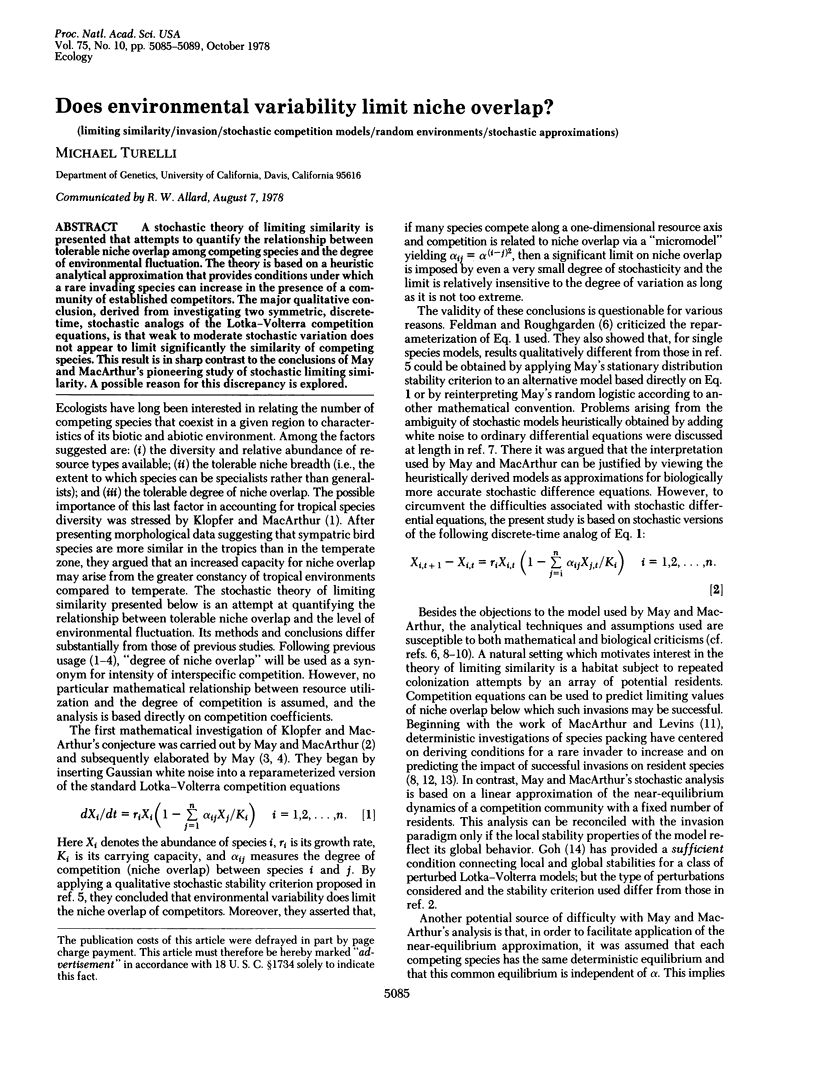
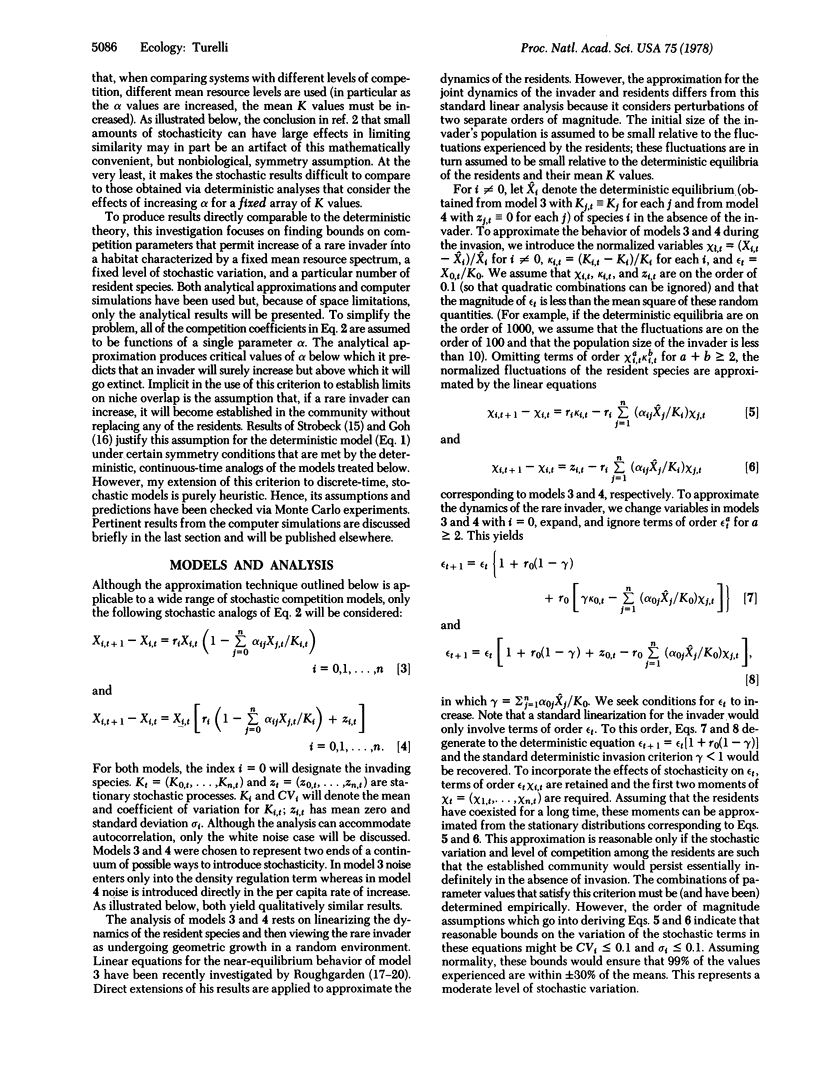
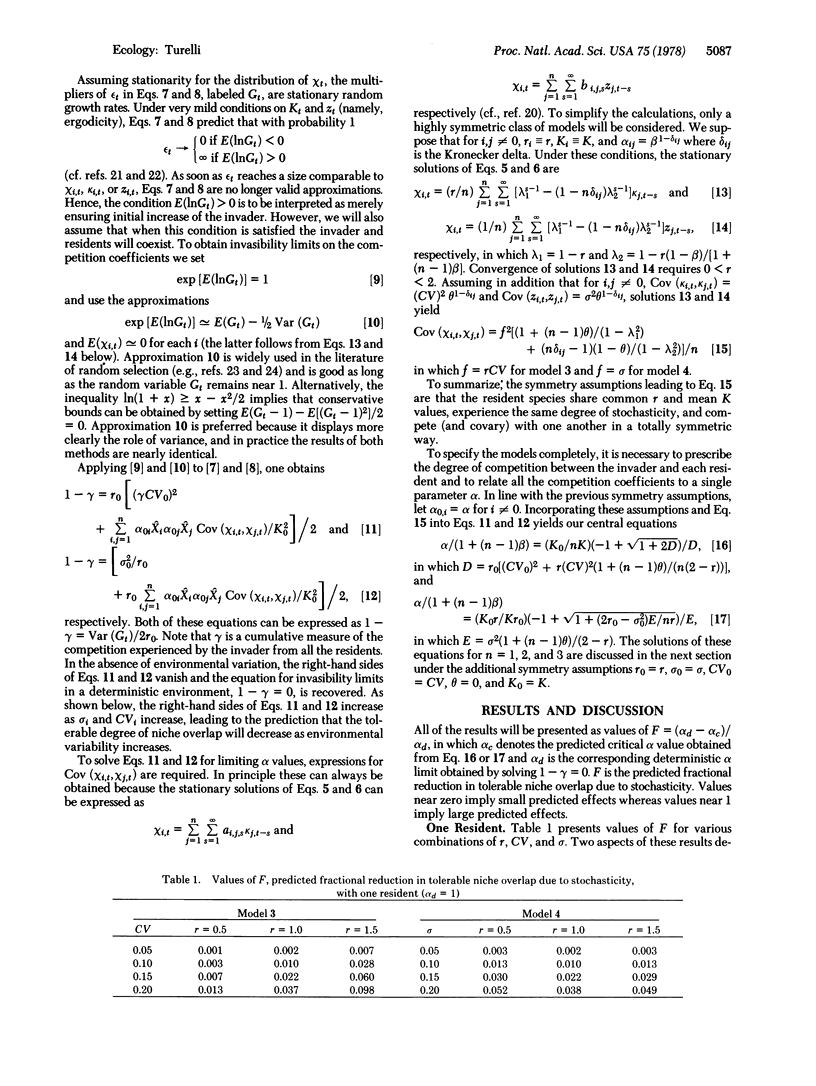
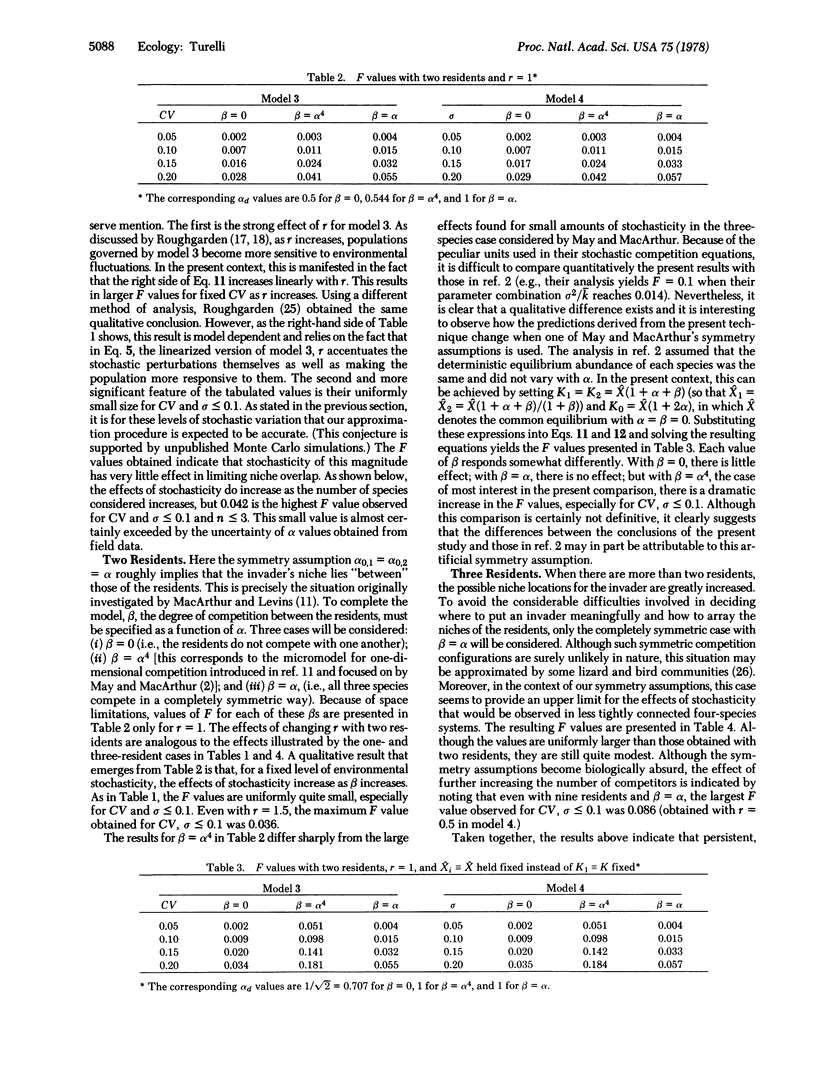
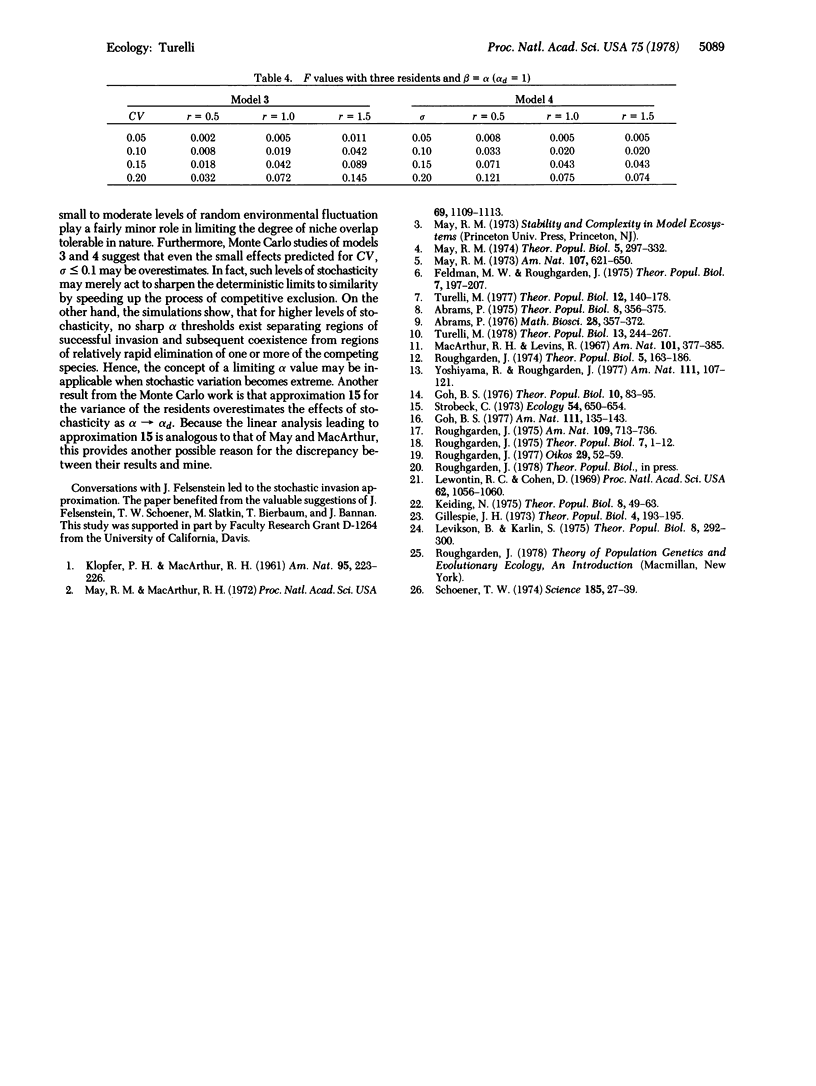
Selected References
These references are in PubMed. This may not be the complete list of references from this article.
- Abrams P. Limiting similarity and the form of the competition coefficient. Theor Popul Biol. 1975 Dec;8(3):356–375. doi: 10.1016/0040-5809(75)90052-0. [DOI] [PubMed] [Google Scholar]
- Feldman M. W., Roughgarden J. A population's stationary distribution and chance of extinction in a stochastic environment with remarks on the theory of species packing. Theor Popul Biol. 1975 Apr;7(2):197–207. doi: 10.1016/0040-5809(75)90014-3. [DOI] [PubMed] [Google Scholar]
- Goh B. S. Nonvulnerability of ecosystems in unpredictable environments. Theor Popul Biol. 1976 Aug;10(1):83–95. doi: 10.1016/0040-5809(76)90007-1. [DOI] [PubMed] [Google Scholar]
- Keiding N. Extinction and exponential growth in random environments. Theor Popul Biol. 1975 Aug;8(1):49–63. doi: 10.1016/0040-5809(75)90038-6. [DOI] [PubMed] [Google Scholar]
- Levikson B., Karlin S. Random temporal variation in selection intensities acting on infinite diploid populations: diffusion method analysis. Theor Popul Biol. 1975 Dec;8(3):292–300. doi: 10.1016/0040-5809(75)90046-5. [DOI] [PubMed] [Google Scholar]
- Lewontin R. C., Cohen D. On population growth in a randomly varying environment. Proc Natl Acad Sci U S A. 1969 Apr;62(4):1056–1060. doi: 10.1073/pnas.62.4.1056. [DOI] [PMC free article] [PubMed] [Google Scholar]
- May R. M., MacArthur R. H. Niche overlap as a function of environmental variability. Proc Natl Acad Sci U S A. 1972 May;69(5):1109–1113. doi: 10.1073/pnas.69.5.1109. [DOI] [PMC free article] [PubMed] [Google Scholar]
- May R. M. On the theory of niche overlap. Theor Popul Biol. 1974 Jun;5(3):297–332. doi: 10.1016/0040-5809(74)90055-0. [DOI] [PubMed] [Google Scholar]
- Roughgarden J. Population dynamics in a stochastic environment: spectral theory for the linearized N-species Lotka-Volterra competition equations. Theor Popul Biol. 1975 Feb;7(1):1–12. doi: 10.1016/0040-5809(75)90002-7. [DOI] [PubMed] [Google Scholar]
- Roughgarden J. Species packing and the competition function with illustrations from coral reef fish. Theor Popul Biol. 1974 Apr;5(2):163–186. doi: 10.1016/0040-5809(74)90039-2. [DOI] [PubMed] [Google Scholar]
- Schoener T. W. Resource partitioning in ecological communities. Science. 1974 Jul 5;185(4145):27–39. doi: 10.1126/science.185.4145.27. [DOI] [PubMed] [Google Scholar]
- Turelli M. A reexamination of stability in randomly varying versus deterministic environments with comments on the stochastic theory of limiting similarity. Theor Popul Biol. 1978 Apr;13(2):244–267. doi: 10.1016/0040-5809(78)90045-x. [DOI] [PubMed] [Google Scholar]
- Turelli M. Random environments and stochastic calculus. Theor Popul Biol. 1977 Oct;12(2):140–178. doi: 10.1016/0040-5809(77)90040-5. [DOI] [PubMed] [Google Scholar]


